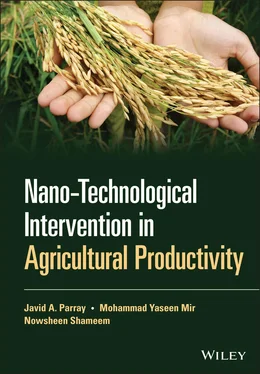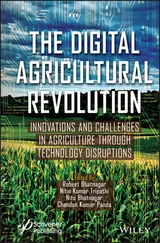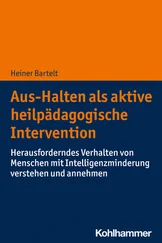1 ...7 8 9 11 12 13 ...16 98 98 Kosmala, A., Wright, R., Zhang, Q., and Kirby, P. (2011). Synthesis of silver nanoparticles and fabrication of aqueous Ag inks for inkjet printing. Mater. Chem. Phys. 129: 1075–1080. https://doi.org/10.1016/j.matchemphys.2011.05.064.
99 99 Cushing, B.L., Kolesnichenko, V.L., and O'Connor, C.J. (2004). Recent advances in the liquid‐phase syntheses of inorganic nanoparticles. Chem. Rev. 104: 3893–3946. https://doi.org/10.1021/cr030027b.
100 100 O'Brien, S., Brus, L., and Murray, C.B. (2001). Synthesis of monodisperse nanoparticles of barium titanate: toward a generalized oxide nanoparticle synthesis strategy. J. Am. Chem. Soc. 123: 12085–12086. https://doi.org/10.1021/ja011414a.
101 101 Wang, D.W. and Su, D. (2014). Heterogeneous nanocarbon materials for the oxygen reduction reaction. Energy Environ. Sci. 7: 576. https://doi.org/10.1039/c3ee43463j.
102 102 Wang, Z., Pan, X., He, Y. et al. (2015). Piezoelectric nanowires in energy harvesting applications. Adv. Mater. Sci. Eng. 2015: 1–21. https://doi.org/10.1155/2015/165631.
103 103 Kot, M., Major, Ł., Lackner, J.M. et al. (2016). Mechanical and tribological properties of carbon‐based graded coatings. J. Nanomater. 2016: 1–14. https://doi.org/10.1155/2016/8306345.
2 Implications of Nanotechnology and Environment
CHAPTER MENU
1 Ecotoxicological Implications of Nanoparticles Ecotoxicity of Fullerenes Ecotoxicity of Carbon Nanotubes Ecotoxicity of Metal Nanoparticles Ecotoxicity of Nanocomposites Ecotoxicity of Oxide Nanoparticles
2 Nanotechnology and Agriculture
3 Risk Assessment Factors and Modulation of Nanomaterials
4 References
2.1 Ecotoxicological Implications of Nanoparticles
Substantial quantities of engineered nanoparticles have been introduced into the atmosphere by creating nanotechnologies, including those in ambient air and water. An increasing number of studies have concentrated on assessing the toxicity of nanoparticles commonly used in the industry to protect human health and biodiversity from the potentially harmful effects of a wide variety of nanoparticles [1].
Oxidative stress is convenient to quantify in the sense of toxicity and ecotoxicity because cells react with many defensive responses, easily counted as an enzyme or genetic reaction, to oxidative stresses [2]. Several in vitro toxicity tests of nanoparticles, for example, TiO 2and fullerenes, have shown that reactive oxygen species (ROS) is generated [3, 4]. This deceptive contrast illustrates the necessity in animals and individual cells to research nanoparticles' interactions and nanoparticles' mechanistic aspects.
Many nanoparticles are photochemically active to produce excited electrons to the sun. When oxygen is present, super radicals can be formed by direct transmission of electrons [5], in an ecotoxicity sense, circumstances in which species are simultaneously exposed to nanoparticles and light.
Ecotoxicity assessments are carried out at a range of trophic stages, including certain species and some exposure conditions, such as microorganisms, plants, invertebrates, and vertebrates. The structured protocols describe individual physical and physiological states and direction and growth and fertility. The benefits of microorganisms are all‐round and very diverse, tiny, and short generation [6].
Apart from microorganisms, there are many very useful organisms from different environments that may be used in ecotoxicity testing. Organisms of different trophic levels from primary producers to predators can be of concern because they accumulate in the food chain (bioamplification). This is because of environmental contaminants. Organisms can also be chosen depending on multiple habitats in the soil and water because they become essential to the biogeochemical cycling of elements [5] for carrying out an environmental method. Ecotoxicity means toxicity exclusively for species of ecological concern. Simultaneously, the term bioassay requires the assessment of toxicity or stress by a substance within an ecological matrix that applies to live in the nature of the organism.
The exposure of fish to nanoparticles in pure water can, therefore, constitute an ecotoxicity trial while exposure of fish to nanoparticles in saltwater results in dissolution of organic carbon (DOC) [6]. Changes in nanoparticles such as ions, natural colloids, and other locked surfaces as they come in contact with the environmental matrix components would likely affect not only mobility, aggregation, and so on. Still, they will also change the toxicity properties [7]. Ecotoxicology, as in traditional toxicology, can also use a wide range of physiological and genetic endpoints. The functional testing of ecotoxic species nevertheless contributes to the difficulty of such studies. Very pure systems have been used in most research on nanoparticulate adverse effects, where nanoparticles can interact with matrix constituents that affect bioavailability [6].
The safety doubts of NPs were emphasized, and their use was investigated both purposely and accidentally concerning the potential dangers associated with NPs [8, 9]. Massive industrial processing of nanoparticles might soon lead to the presence, in different environments and humans, of both nanoparticles and waste produced when presenting them. Once you evaluate nanoparticles' hazards from the environmental perspective, there is a paradox that potentially harmful nanoparticles often possess the potential of creating the so‐called green chemistry. These more environmentally friendly processes can be used in ecological contaminants [10]. Examples are the use of engineered nanoparticles to treat water and fix the water, which has proven successful and has also created questions about human exposures to nanoparticles in treated water. Research to determine whether or not a substance is harmful includes assessing the material's inherent toxicity and its interaction with living cells [11]. In in vitro and in vivo toxicological tests, the doses or dosage levels used are most often too high relative to actual accidental human exposure [8].
More research is therefore needed before widespread statements on ecotoxicological nanoparticles could be produced. The best approach subject to scrutiny is to prevent the escape of nanoparticles to the atmosphere. This decreases their mobility and prevents their presence in the atmosphere by inserted NPs into organic or inorganic matrices [12]. The easiest way to improve the protection of NPs is the use of nanocomposites like these. The use of magnetic nanoparticles in its architecture is a supportive approach to ensuring nanoparticles' security [13]. Based on the useful characteristics and the response to a magnetic field, vegetable NPs are prodigious influential scientists [14]. Polymeric material containing magnetic nanoparticles with specific characteristics, catalytic or bactericidal operation fields, is that magnetic nanoparticles can be retrieved quickly using simple magnetic traps to leak the nanocomposite [15]. Nanoparticles' ecotoxic consequences are as follows.
2.1.1 Ecotoxicity of Fullerenes
C60 fullerenes, beginning with the seminal work of Oberdorster [16], have been among the first engineered nanoparticles to be studied in ecotoxicity. In the first study on fullerene toxicity [16], Oberdorster showed that low C60 (0.5 mg/l) concentrations could result in oxidation and enzyme changes. The C60 model influences the ecotoxicity of C60. Bacterial studies of C60 fullerenes showed reduced growth and breathing with Escherichia coli and Bacillus subtilis [17, 18]. Other reports demonstrated a responsive cellular property impaired by low nC60 concentration [14] in bacterial membrane composition and fluidity. In the presence of nC60, Pseudomonas putida reduced its unsaturated fatty acids and augmented cyclopropane fatty acids to defend the bacterial membrane against oxidative stress.
Читать дальше











![Chade-Meng Tan - Search Inside Yourself - Increase Productivity, Creativity and Happiness [ePub edition]](/books/703803/chade-thumb.webp)
